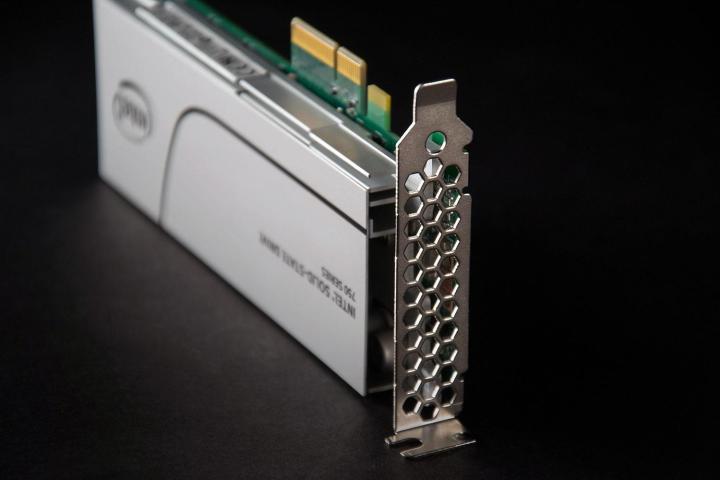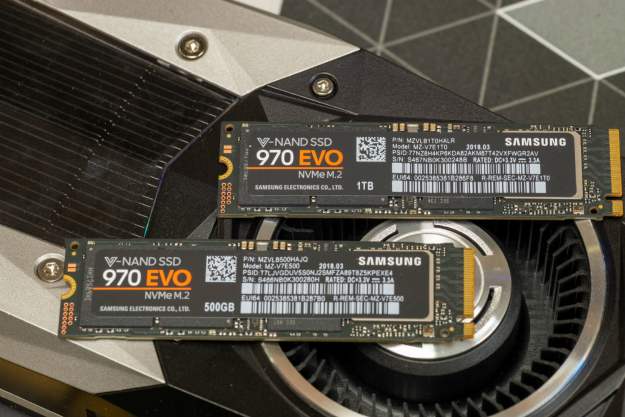
SSD life span

Let’s use some logic: SSDs don’t have moving parts like old drives, so they don’t experience wear and tear. At least, not physically. But – what happens to the memory on the inside is a different matter. You see, SSDs use something call program-erase or P/E cycles. Every time they write data, they vanish a block and replace it with a new block that now includes the new data.
This magic trick is what makes the drive so fast and dependable, but like every genie you only get a certain number of wishes before the lamp goes cold. After a certain number of cycles, the SSD drive will start to wear down and then stop functioning altogether. How many rewrites to you get? Well, that depends on a lot factors, but if you were to walk into a store and buy a new SSD drive right now, it will probably last for up to 3,000 to 4,000 P/E cycles before giving up the ghost.
If you want to know more about P/E cycles and their limits you can dive into that deep and highly technical world. Interestingly, as SSD drives have grown more compact and common, their endurance has actually dropped (something had to be sacrificed).
But before you start counting every time you use the drive in an OCD frenzy, remember this cycle endurance is quoted per block of storage, and your drive contains millions of blocks. You’re very likely to replace the drive long before it dies. At the corporate level endurance is much more important and SSDs have more problems, but that’s a different topic.
Tips for healthy SSD performance

Welcome, fellow hard drive owners, to the curious world of SSD optimization! The challenge here is unlearning everything you may have known before. You see, all previous hard drive optimization practices and even software was written for physical drives and their moving parts, not flash memory. Of course this is slowly changing as more and more consumer products adopt solid state drives, but – particularly for older computers – there are still a lot of unnecessary hard drive management tools trying to fit square pegs in circular holes.
In other words, there’s a lot you don’t need to do. You don’t need to defrag a solid state drive, ever. You don’t need to use software utilities not directly associated with the drive itself. You don’t need to worry as much about environment and temperature. You don’t need to clean anything. So, what can optimize an SSD? Let’s talk about a few important ways.
- TRIM command: A TRIM command helps ensure that your SSD doesn’t slow down over time. It helps improve efficiency and write performance. You see, flash memory works by finding empty cells of storage and zapping data into them. If it doesn’t find any empty cells, it has to replace old data and this can slow the drive down considerably. So, once old solid state drives use up all their fresh new storage, they run into problems. The TRIM command solves that by erasing all storage cells filled with unnecessary or unused data. You can enable automatic TRIM on Windows computers, and there is even a way to use TRIM on Macs for third party SSDs – although OS X isn’t very happy about it.
- Management software: SSDs have management software of their own, tailored for their unique needs. This software allows for firmware upgrades, patches, and so on – it’s an important part of keeping your drive healthy and efficient. This type of software comes in two flavors. First, there is software created by the manufacturer, such as Samsung’s Magician software. Second, there are third party downloads like Tweak-SSD. For simple performance, manufacturer versions are usually your best bet (plus free).
- Divide your data: Yes, SSDs can easily handle movies and large photos. However, if you can, you may want to store those elsewhere. Keeping very large files made to be recorded, pulled out and played on demand is rough on an SSD. It can shorten their life span, and if you have a choice to store those large files on a mechanical drive, you should do it. An external drive or dual-drive computer can help with this.
- Size does matter: Generally, spring for larger SSDs if possible. Because of the way that solid state drives work, the larger capacity versions are often faster and have more endurance than smaller drives. Also, SSDs tend to encounter major slowdowns when they are almost filled up with data, so you want to delay that moment as long as possible.
- Increase RAM: A computer with a lot of RAM can pluck data from an SSD more efficiently, saving on rewrites and ultimately extending the life of the drive. Too little RAM creates the opposite situation. Upgrade your RAM or choose a computer with a healthy amount when using your solid state drive.
Don’t do these things!
Now that we’ve covered the do’s, let’s spend a brief time going over the don’ts:
- Don’t defrag: We already mentioned it, but seriously. Defragging doesn’t do anything at all to an SSD except make it rewrite a lot of data, hastening its eventual demise. Don’t use any software that claims to defrag an SSD, it’s just trying to prey on the ignorant.
- Don’t use optimization software and settings: All the optimization software made for mechanical drives is bad for SSDs. Unless it came specifically with your solid state drive, disable it completely. These features, like indexing, are typically found in the same spot as your defragmentation tool. Just turn it all off when switching to SSD, or at least only use it on remaining mechanical drives.
- Don’t fill it up: As we mentioned, filling an SSD to 90% or more capacity is asking for trouble as the flash memory searches for ways to write new data. Everything slows down like a bad traffic jam. Warning bells should start going off once your drive has reached the 75% mark and you still have lots of data to upload.
Editors' Recommendations
- The best SSDs for 2023
- Samsung’s 2nd-generation SmartSSD can process data right on the drive
- World’s first 200TB SSD is nearly here, but you can’t use it
- This Windows 11 update could seriously boost your SSD
- Micron’s new tiny 2TB SSD is bad news for laptop HDDs




